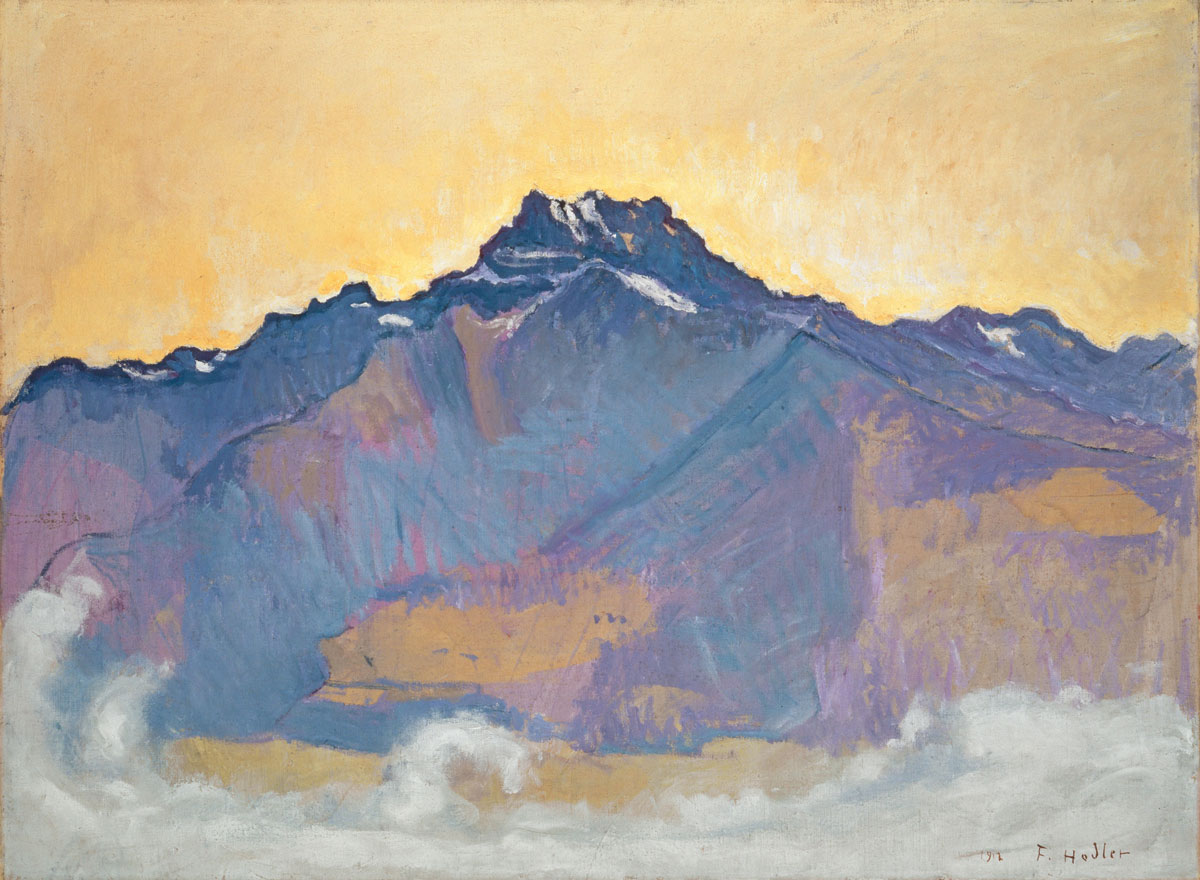Mountain scenarios at Kunstmuseum in Basel
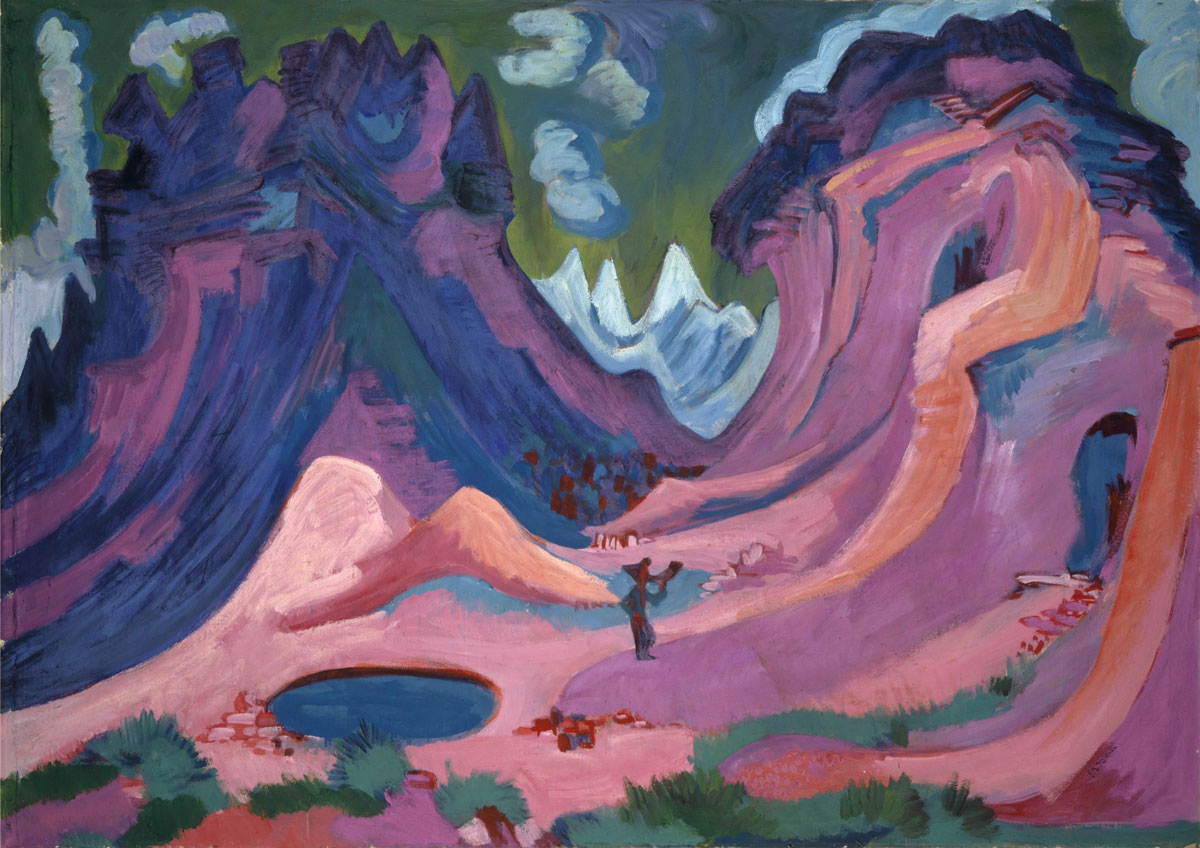
Ernst Ludwig Kirchner, Amselfluh, 1922, oil on canvas, 120 x 170.5 cm. Kunstmuseum Basel, with the support of Dr. H.C. Richard Doetsch-Benziger and Max Ras erworben, 1944. Courtesy Kunstmuseum Basel, photo credit Martin P. Bühler
The mountains, the epitome of stability and permanence, even of a reality that transcends time. Curated by Eva Reifert, the selection of works from our collection demonstrates in what way our idea of the mountains, their image in our minds, has kept evolving ever since outsiders started exploring the high mountain regions of the Alps two and a half centuries ago.
Art is always also a reflection of shifting worldviews. Depictions of the Alps emerge as a distinctive genre at the dawn of the Enlightenment, and a painter like Caspar Wolf, who undertakes extensive excursions into the mountains, embodies the spirit of scientific inquiry that is characteristic of his era. On the eve of the twentieth century, by contrast, Ferdinand Hodler’s works signal his efforts to overcome realism and restore nature’s mystery. By submitting his motifs to a symmetry that heightens their majesty, Hodler conveys his awe before the phenomena of nature.
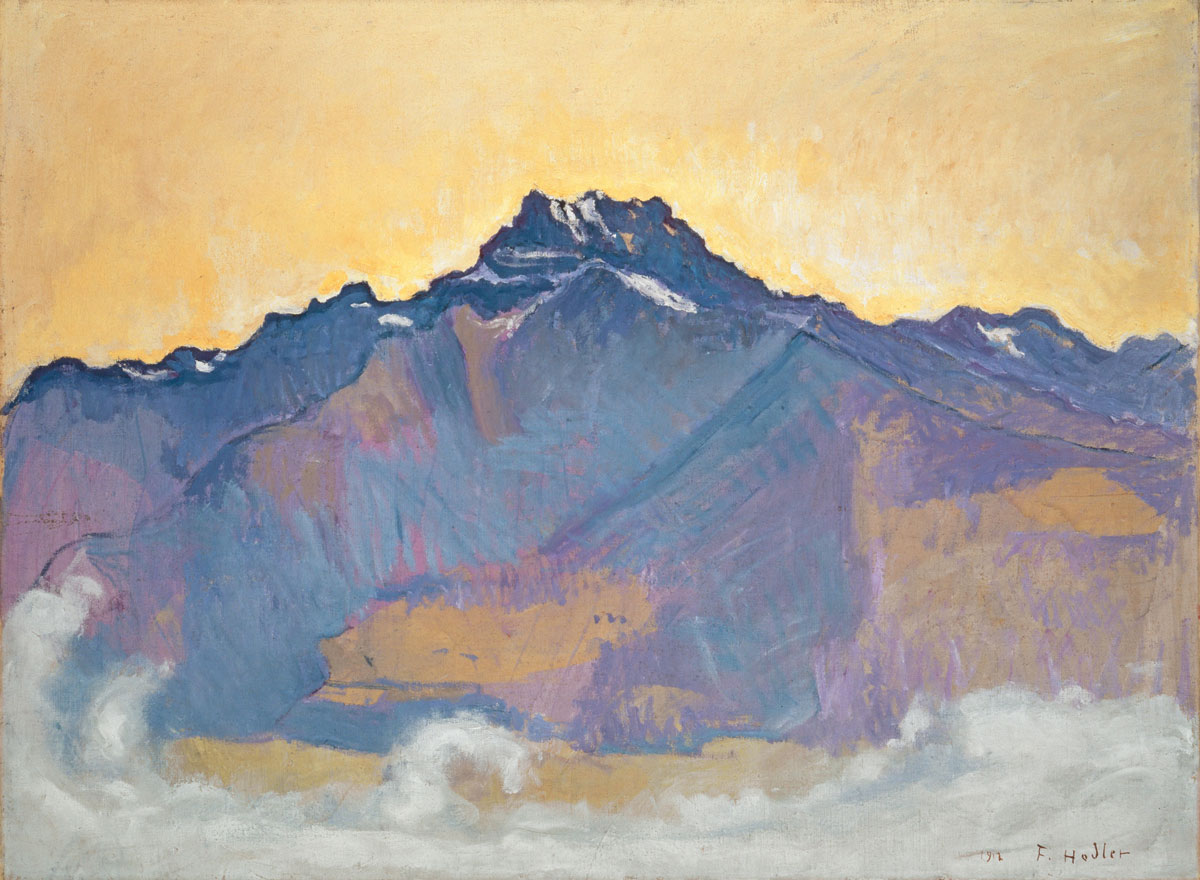
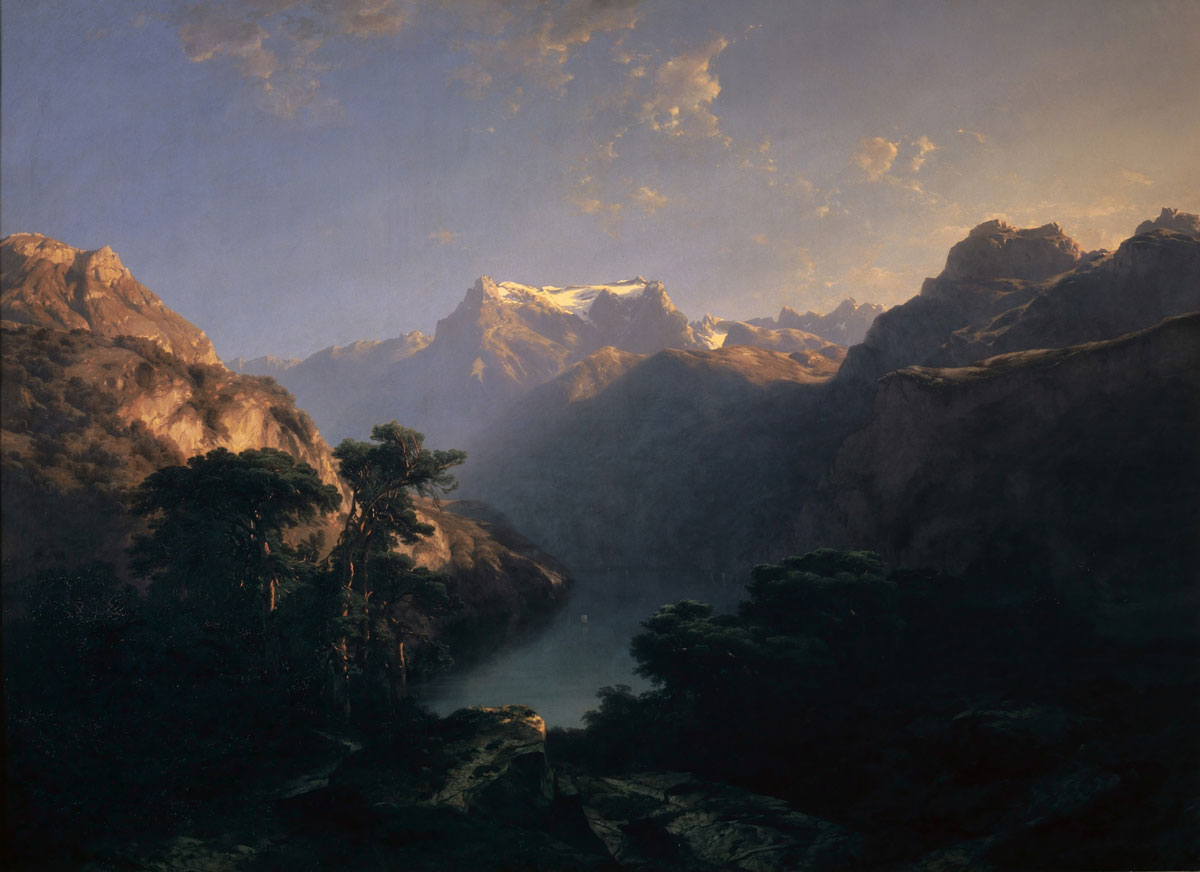
Ferdinand Hodler, Die Dents du Midi von Chesières aus, oil on canvas, 65.7 x 88.3 cm. Courtesy Kunstmuseum Basel, Vermächtnis Max Geldner, Basel, 1958. Photo credit: Kunstmuseum Basel, Martin P. Bühler
Alexandre Calame, Am Urnersee, 1849, oil on canvas, 194 x 260.5 cm. Kunstmuseum Basel, donation of the heirs of Marie Vischer d'Assonleville, 1950. Credit Kunstmuseum Basel, photo Martin P. Bühler
The very formats indicate how the market and audience for landscape paintings change over time as the genre rises in prestige: in the mid-eighteenth century, the first tourists are enthralled by Johann Ludwig Aberli’s dainty souvenirs, whereas Alexandre Calame’s breathtaking vistas unmistakably cater to his clients’ desire for imposing art objects.
In art-historical terms, the selection traces an arc from Romanticism to Expressionism. Joseph Anton Koch’s idealizing depictions of snowcapped peaks, Segantini’s turn to painting en plein air right in front of the motif, and Ernst Ludwig Kirchner’s use of violently agitated pinks and violets to visualize inner states of mind are important milestones in this development.
The domestication of Alpine peaks and panoramas as Switzerland’s trademark tourist attractions is part of this history as well. By contrast, what would seem to have changed very little are the longings that bring people to the mountains and the experiences with which they return from their explorations. The works on view reflect a strikingly constant set of themes: the desire to leave everyday life behind, the joy of natural beauty, the exhilaration of rising above it all, and the overwhelming sense of a presence greater than us.
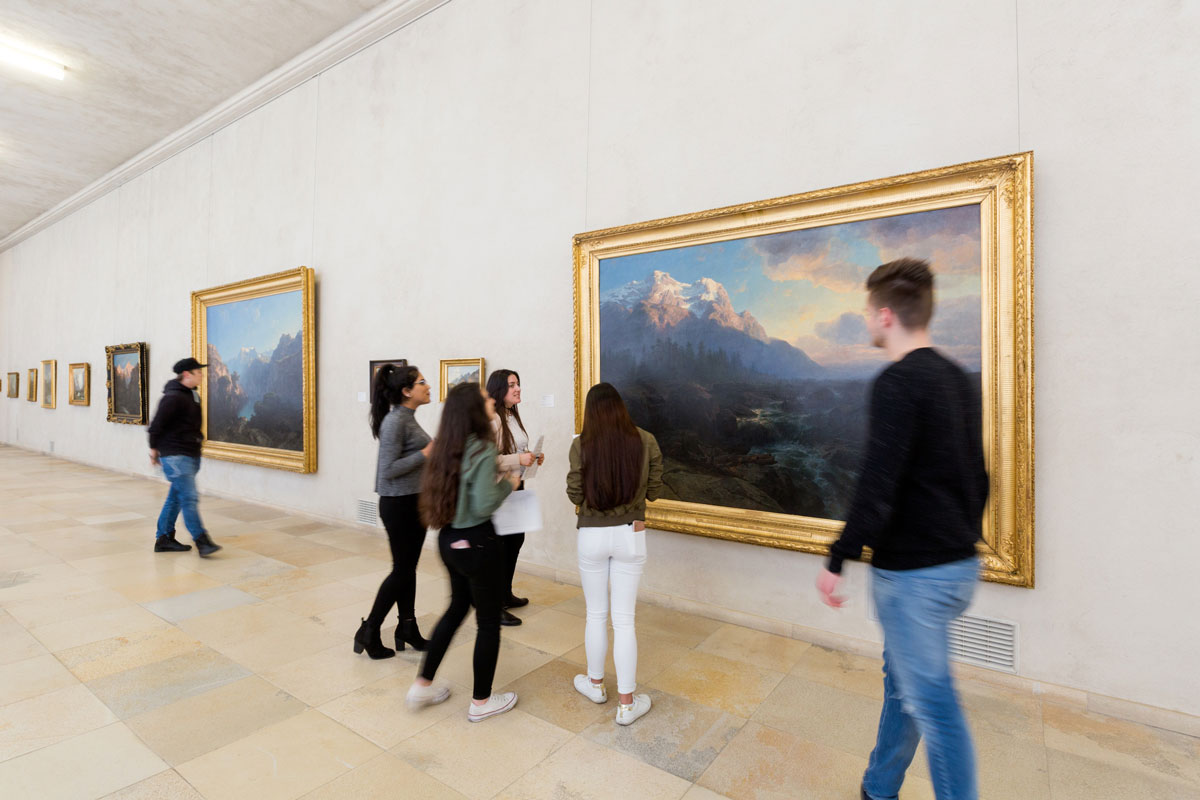
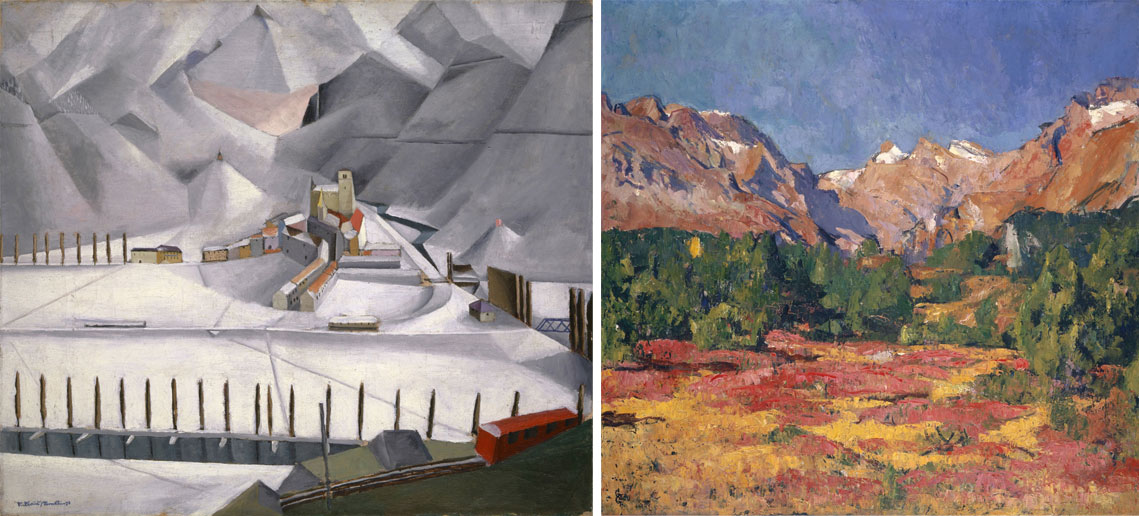
In order: Swiss Mountains, installation view at Kunstmuseum Basel, Julian Salinas; Niklaus Stoecklin, Landschaft bei Visp, 1920, oil on canvas, 51.5 x 59 cm. Acquired with the contribution of the Birmann Funds. Courtesy Kunstmuseum Basel, photo credit: Martin P. Bühler
Giovanni Giacometti, Paesaggio d’autunno, 1927, oil on canvas, 100.4 x 104.9 cm. Kunstmuseum Basel, property of the Federal Office of Culture in Bern (permanent loan, Kunstmuseum Basel, 1929). Credit Kunstmuseum Basel, photo: Martin P. Bühler
Swiss Mountains
Kunstmuseum, Basel
Curatet by Eva Reifert

